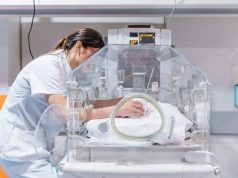Findings seen for diagnosis of zone I disease, plus disease, and type 2 retinopathy of prematurity
FRIDAY, April 6, 2018 (HealthDay News) — Ophthalmoscopy and telemedicine are similarly accurate for detection of clinically significant retinopathy of prematurity (ROP), according to a study published online April 5 in JAMA Ophthalmology.
Hilal Biten, M.D., from the Oregon Health & Science University in Portland, and colleagues compared the accuracy and sensitivity of ophthalmoscopy versus telemedicine in diagnosing ROP in a multicenter prospective study. Data were included for 281 premature infants who met the screening criteria for ROP. Each examination consisted of binocular indirect ophthalmoscopy of one eye by an experienced clinician, followed by remote image review of wide-angle fundus photographs by three telemedicine graders.
A total of 1,553 eye examinations were classified using both ophthalmoscopy and telemedicine. The researchers found that there was similar sensitivity for ophthalmoscopy and telemedicine for zone I disease (78 versus 78 percent; P > 0.99), plus disease (74 versus 79 percent; P = 0.41), and type 2 ROP (stage 3, zone I, or plus disease: 86 versus 79 percent; P = 0.10). For identifying stage 3 disease, ophthalmoscopy was slightly more sensitive (85 versus 73 percent; P = 0.004).
“With the caveat that there was variable accuracy between examiners using both modalities, these results support the use of telemedicine for the diagnosis of clinically significant ROP,” the authors write.
Two authors disclosed financial ties to the medical device and pharmaceutical industries.
Abstract/Full Text
Editorial (subscription or payment may be required)
Copyright © 2018 HealthDay. All rights reserved.








